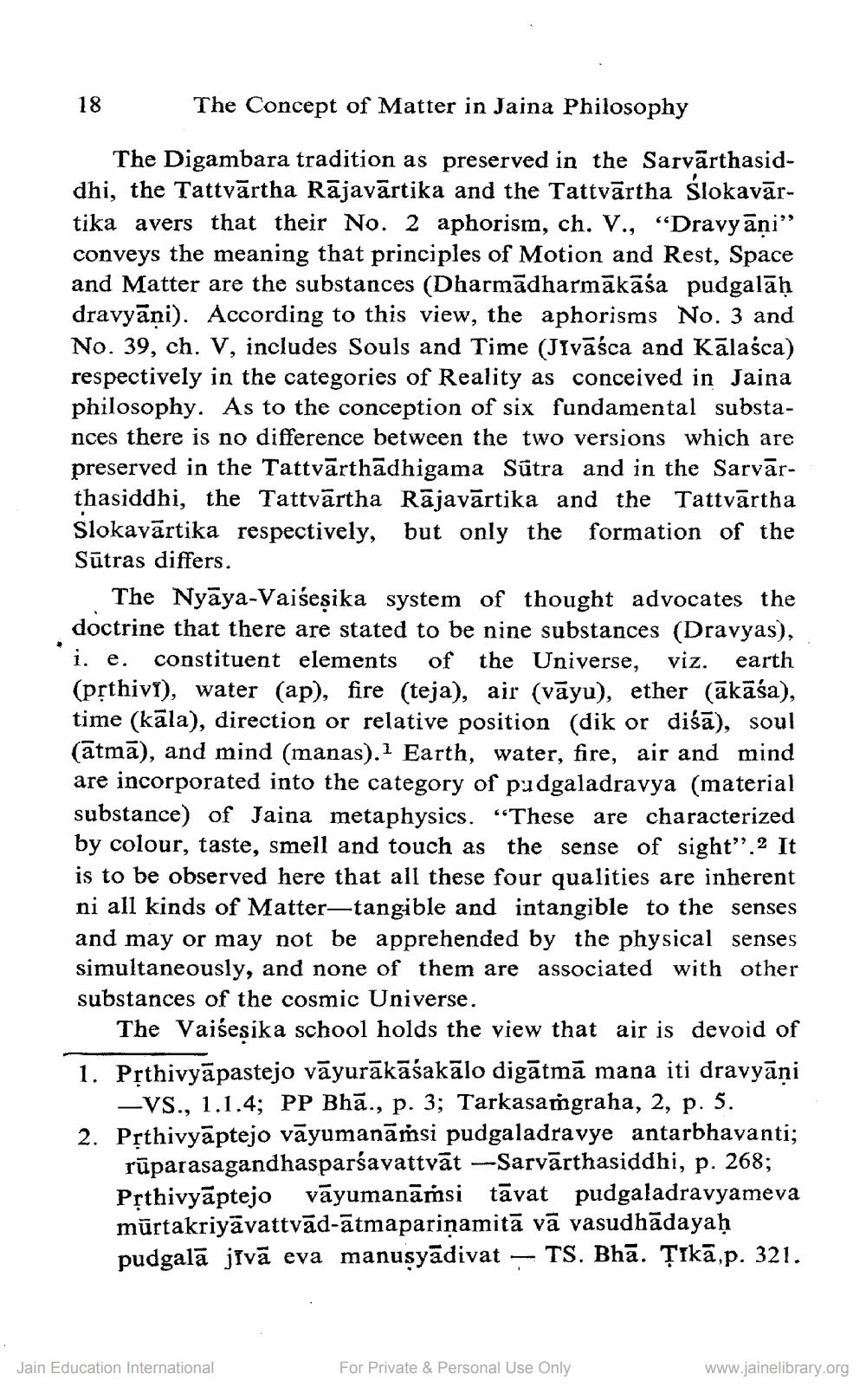________________
18
The Concept of Matter in Jaina Philosophy
The Digambara tradition as preserved in the Sarvārthasiddhi, the Tattvārtha Rājavārtika and the Tattvārtha Slokavārtika avers that their No. 2 aphorism, ch. V., “Dravyāņi” conveys the meaning that principles of Motion and Rest, Space and Matter are the substances (Dharmādharmākāśa pudgalāḥ dravyāni). According to this view, the aphorisms No. 3 and No. 39, ch. V, includes Souls and Time (Jivāśca and Kālasca) respectively in the categories of Reality as conceived in Jaina philosophy. As to the conception of six fundamental substances there is no difference between the two versions which are preserved in the Tattvārthādhigama Sūtra and in the Sarvārthasiddhi, the Tattvārtha Rājavārtika and the Tattvārtha Slokavārtika respectively, but only the formation of the Sūtras differs.
The Nyāya-Vaiśesika system of thought advocates the doctrine that there are stated to be nine substances (Dravyas), i. e. constituent elements of the Universe, viz. earth (přthivi), water (ap), fire (teja), air (vāyu), ether (ākāśa), time (kāla), direction or relative position (dik or diśā), soul (ātmā), and mind (manas).1 Earth, water, fire, air and mind are incorporated into the category of pudgaladravya (material substance) of Jaina metaphysics. “These are characterized by colour, taste, smell and touch as the sense of sight" 2 It is to be observed here that all these four qualities are inherent ni all kinds of Matter-tangible and intangible to the senses and may or may not be apprehended by the physical senses simultaneously, and none of them are associated with other substances of the cosmic Universe.
The Vaiseșika school holds the view that air is devoid of 1. Prthivyāpastejo vāyurākāśakālo digātmā mana iti dravyāni
-VS., 1.1.4; PP Bhā., p. 3; Tarkasamgraha, 2, p. 5. 2. Prthivyāptejo vāyumanāṁsi pudgaladravye antarbhavanti;
rūparasagandhasparśavattvāt --Sarvārthasiddhi, p. 268; Přthivyāptejo vāyumanāṁsi tāvat pudgaladravyameva mūrtakriyāvattvād-ātmaparinamitā vā vasudhādayaḥ pudgalā jīvā eva manusyādivat - TS. Bhā. Țikā,p. 321.
Jain Education International
For Private & Personal Use Only
www.jainelibrary.org




